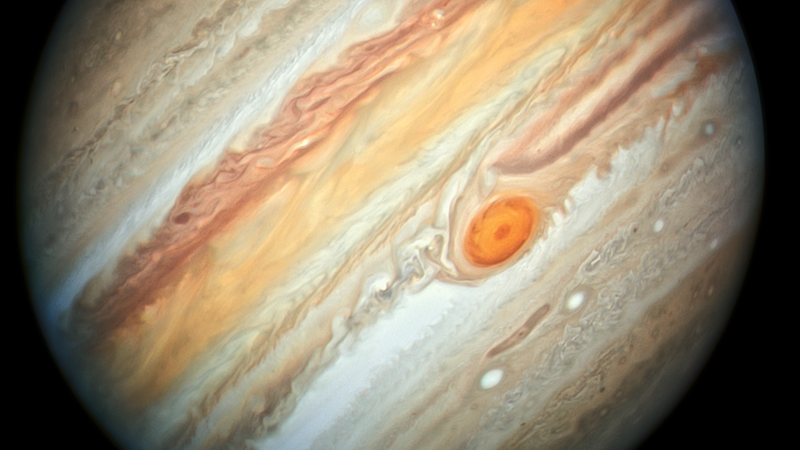Remember a few months ago when the Hubble Space Telescope needed to be repaired? While the telescope might be old without it, scientists may not have spotted an oddity with Jupiter’s Great Red Spot.
As you may be aware, the red spot on the solar system’s largest planet is a storm that has been going on for aeons, but now something peculiar is happening.
Thanks to observations from Hubble, NASA believes that the outer most ring of the storm is now moving faster than the innermost region of the storm. NASA compares the two speeds by describing the outer ring as “the speed of an advancing race car driver” while the innermost rings are described by the firm “like someone cruising lazily on a sunny Sunday afternoon”.
“When I initially saw the results, I asked ‘Does this make sense?’ No one has ever seen this before,” said Michael Wong of the University of California Berkley who led the analysis of the data.
The change in speed amounts to an increase of 1.6 miles per hour per Earth year and NASA only noticed this thanks to 11 years of data from Hubble’s observations.
So the question you may have is why is this bizarre event happening?
The short answer is that nobody knows.
“We find that the average wind speed in the Great Red Spot has been slightly increasing over the past decade,” Wong said. “We have one example where our analysis of the two-dimensional wind map found abrupt changes in 2017 when there was a major convective storm nearby”.
Even more mysterious is what the cause of this speed increase is. Unfortunately there is no way of knowing because, as Wong rightly points out, NASA can’t see what lurks below the cloud, at least not with the data it has.
The storm itself is shrinking, but it still measures 16 000km across, large enough for Earth to fit inside of it.
You may be wondering why NASA is so interested in a storm on another planet and while it seems odd, observing storms, wind and cloud on other planets helps us learn about not only the planets themselves, but also the physics that drive those weather systems.
Here’s hoping nothing too serious is happening on Jupiter, not that we could do anything about it if there was a problem.
[Source – NASA] [Image – NASA, ESA, A. Simon (Goddard Space Flight Center) and M.H. Wong (University of California, Berkeley)]

